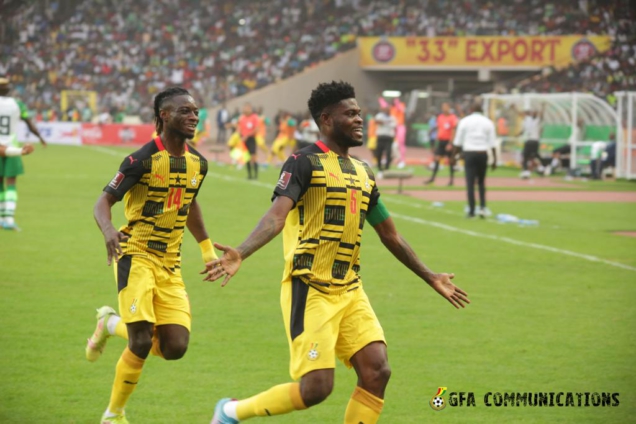The Black Stars played out a 1-1 draw with the Super Eagles at the Moshood Abiola stadium in the second leg of the 2022 World Cup qualifiers.
A goalless draw in the first leg of the tie meant courtesy of the away goal rule, the Black Stars will be staging a return to the global showpiece when the event kicks-off in November. It will be Ghana's fourth appearance at the World Cup.
After what many described as a very difficult draw - not to say the Black Stars found it any tad easier, Otto Addo guided the Black Stars expertly, displaying flashes of tactical creativity and flexibility.
It was one of those brief flashes which secured Ghana's ticket to Qatar but what did the German-born Ghanaian do in Abuja?
Starting lineups
After a distasteful Kumasi performance, Augustine Eguavoen made an overhaul of his squad with Iheanacho, Zaidu Sanusi, Samuel Chukwueze and Moses Simon all being relegated to the bench.
He also ditched Nigeria's 4-2-3-1 from the first leg, opting for a more expansive 4-3-3. Etebo and Frank Onyeka joined Joe Aribo in midfield, while Victor Osimhen was supported in attack by Ademola Lookman and Emmanuel Dennis.
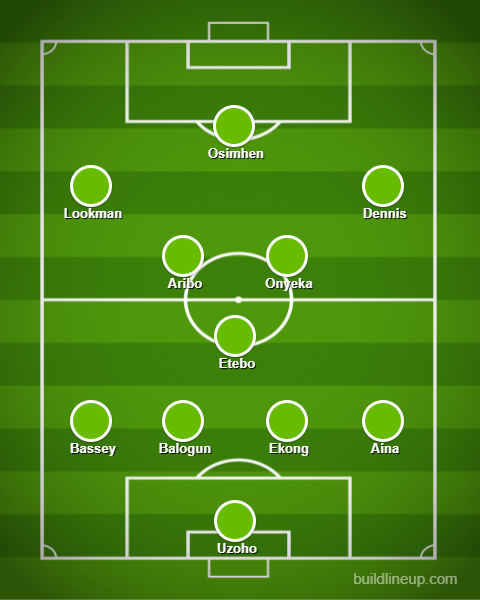
Meanwhile, Addo stuck to his starting lineup and formation from the first leg. Probably a cultural 'don't fix what's not broken' thought process.
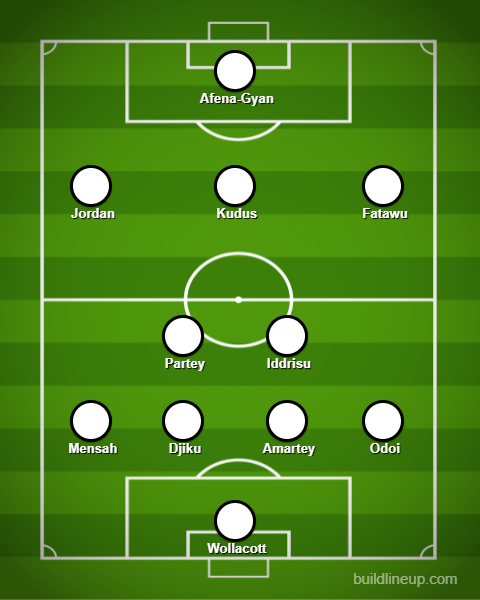
Nigeria setup how they intended to play and right from start of the game, submerged the Black Stars under intense levels of pressure, which Ghana struggled to deal with.
Approach play
Large portions of Nigeria's attack came from the wide areas where they looked to create overloads and outnumber the Black Stars. Frank Onyeka, who was deployed on the right of Nigeria's midfield as one of two advanced midfielders, was key to their approach as he kept making underlapping runs into Ghana's right half-spaces.
In the wide areas, Nigeria had numerous rotations which the Black Stars struggled to keep up with.


The Super Eagles created many of these situations, but cases of poor delivery, good goalkeeping from Joseph Wollacott and impressive defending kept Nigeria out.
In the first half, Nigeria played 10 more crosses than Ghana's 1 but had a crossing accuracy of 9%.
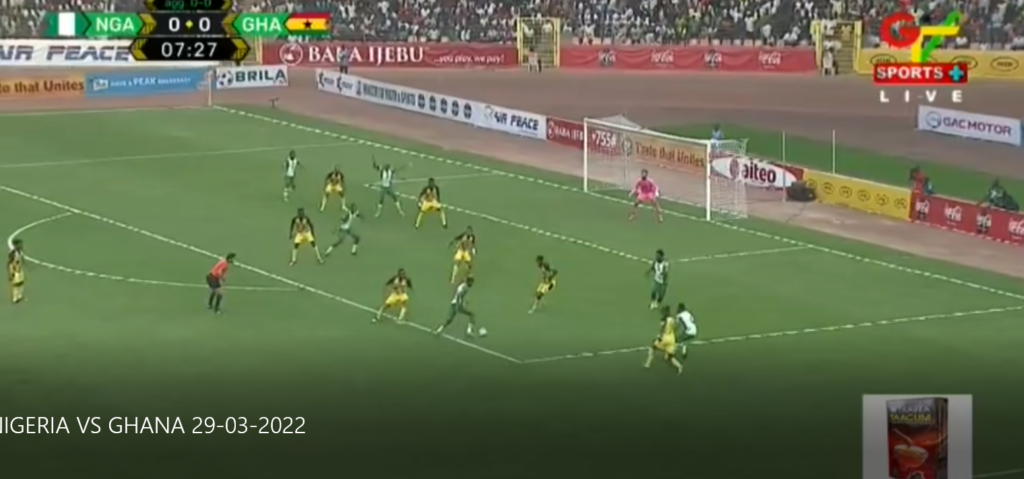
Meanwhile the Black Stars attempted applying the same 3-1-4-2 shape in possession from the first leg, but were largely unsuccessful due to Nigeria's adjustment in press.
In Kumasi, the Super Eagles looked to press in their 4-2-3-1 shape but in Abuja, they adopted a 4-1-3-2 shape which limited the Black Stars' ability to dominate the ball. Aribo joined Osimhen up top and instead of a man-oriented press, Nigeria picked up a ball-oriented approach.
Meaning, they pushed up and squeezed areas where the Black Stars looked to buildup from.
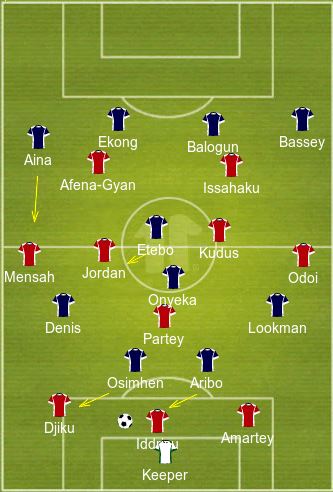
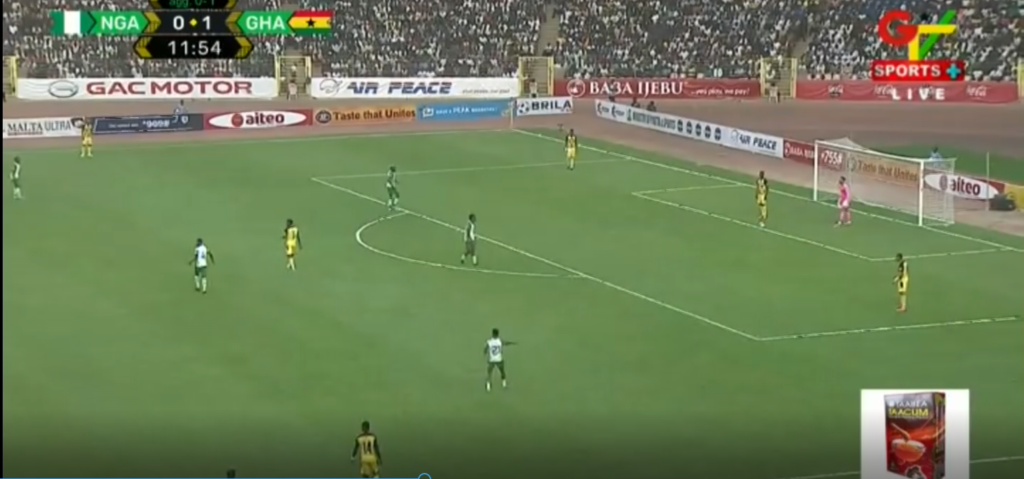
As a result of this, the Black Stars had to rely on more long balls to progress. Despite playing 40 long balls in the first half of the first leg, the Black Stars attempted 226 passes. But in the first-half of the second leg alone, Ghana played 24 long balls from a total of 93 attempted passes. However the inability to win air balls and second ball, together with some cases of poor distribution meant Black Stars could not retain possession.
The Black Stars seeded possession to the Super Eagles in the first half, with the hosts hogging 68%. Ghana completed only 56 passes in the first half while Nigeria completed 118.
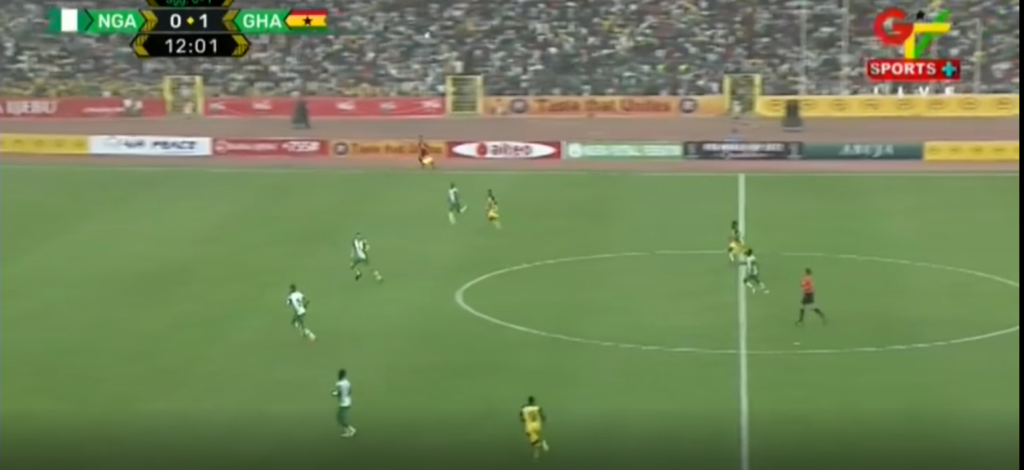
Nigeria also had 4 shot attempts inside Ghana's 18-yard box while the Black Stars had 0 in Nigeria's. Also, Ghana being pegged back for long periods meant they made 7 more clearances than Nigeria's 2.
Defending
Nigeria's switch to a 4-3-3 for the second leg was an attempt to gain more control of the game as they needed more initiative. It is safe to say Addo predicted the Super Eagles will switch to a 4-3-3, as Ghana's press was structured to control Nigeria's three midfielders during buildup.
The Black Stars adopted a 4-1-4-1 to press, where Partey and Kudus were directly behind Afena-Gyan. They, Kudus especially, had the responsibility to track the deepest of Nigeria's three midfielders - Etebo in this case.
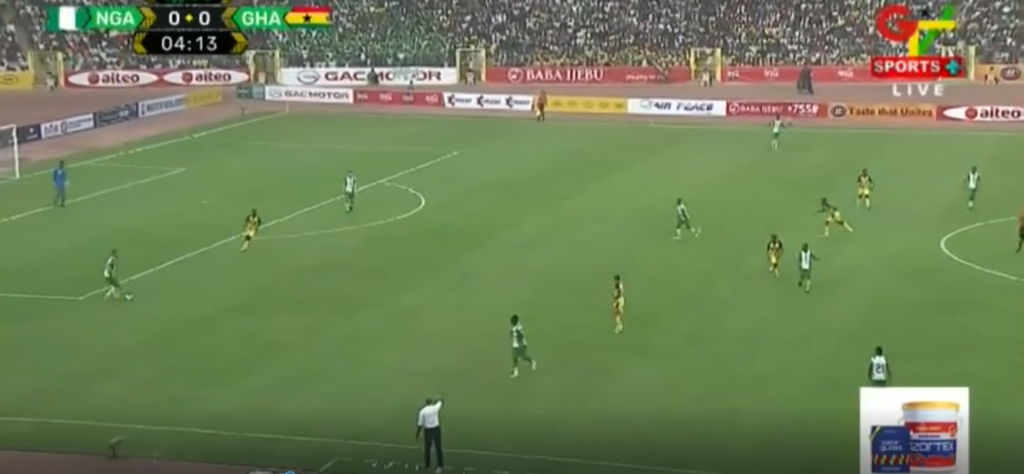
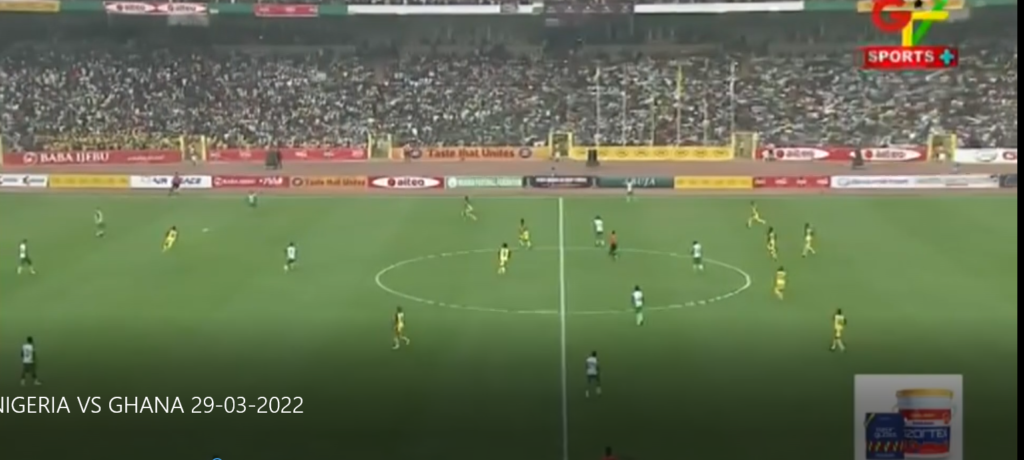
However deep in their own half, the Black Stars used a 4-4-1-1, with Partey and Iddrisu sitting right in front of the 'back 4'. Their responsibility was to monitor the deal with runs of Aribo and Onyeka from midfield.

However the Black Stars had a torrid time controlling the Super Eagles in the wide areas and it was in one of those sequences Lookman managed to win the penalty for Nigeria.
Second half switch
To mitigate Nigeria's dominance in the wide areas, the Black Stars switched to a 3-5-1-1 which was predominantly a 5-3-2 without the ball. Kofi Kyereh replaced Issahaku, Elisha Owusu replaced Iddrisu while Andy Yiadom, who played as a right wingback, came on for Jordan.
The midfield constituted of Owusu at the base with Kyereh and Partey on either side, while Kudus played off Afena-Gyan.
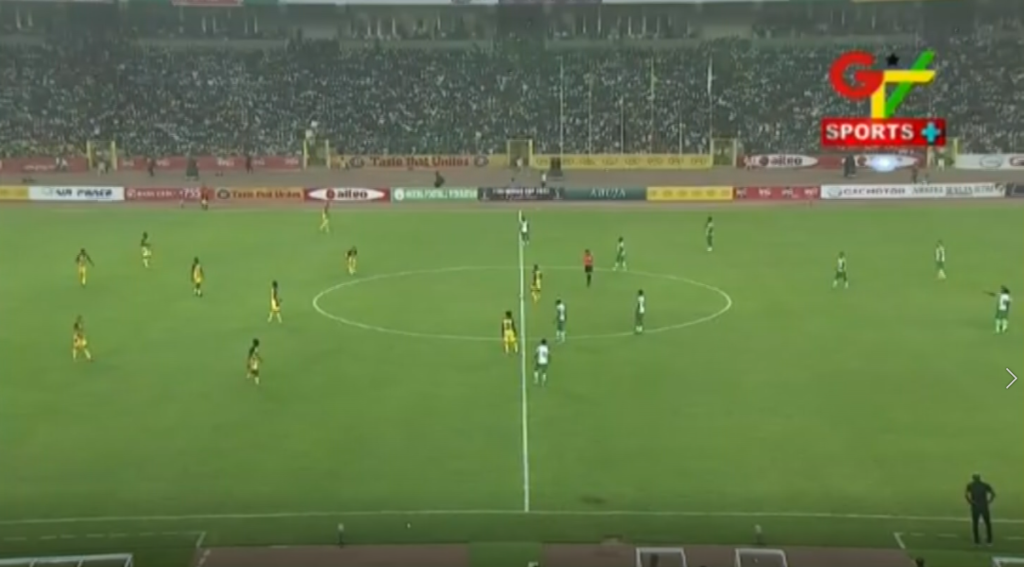
With this new shape, it was relatively easier for the Black Stars to control Nigeria's numbers in the wide areas. Ghana's wing-backs in Yiadom and Odoi could step out and engage Nigeria's wingers more, without the fear of leaving space behind since there was now a third man in defence.
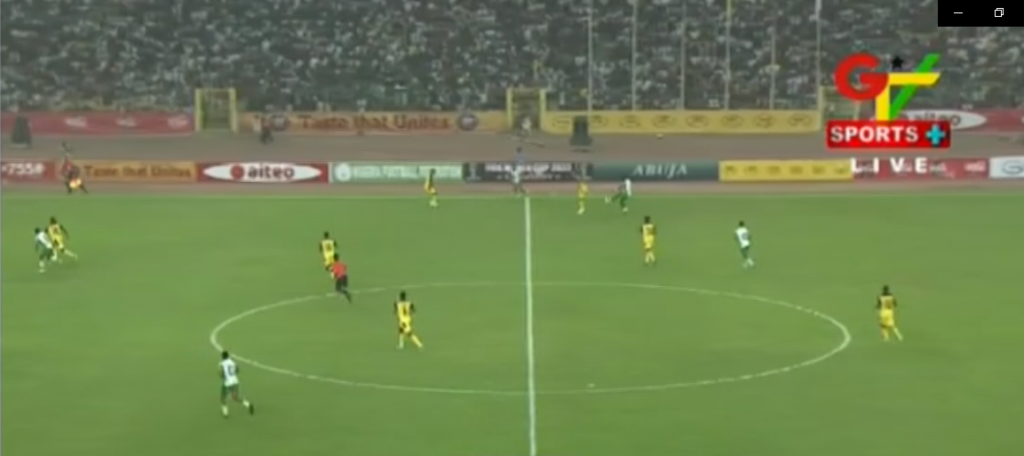
Meanwhile Kyereh and Partey could also do a job on Nigeria's fullbacks. One of the two midfielders could step out to engage the fullbacks depending on which side of the field the ball was at.
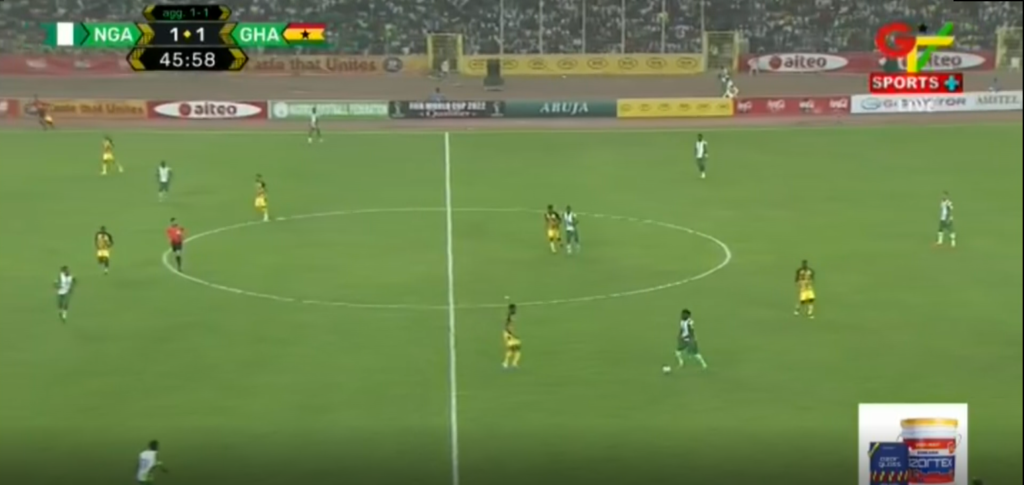
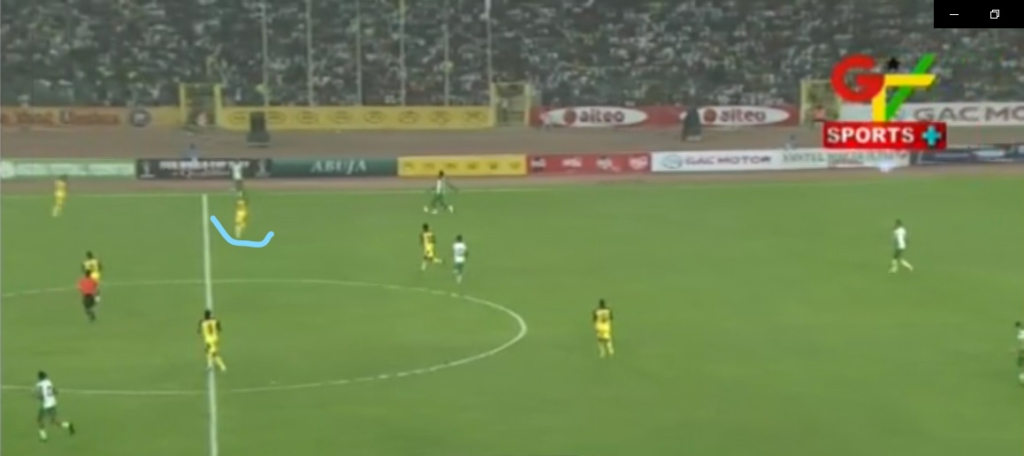
The Black Stars' success in controlling Nigeria in the wide areas was due to the ability to have equal or more numbers in those areas. Equal numbers meant Nigeria could not profit off third-man runs.
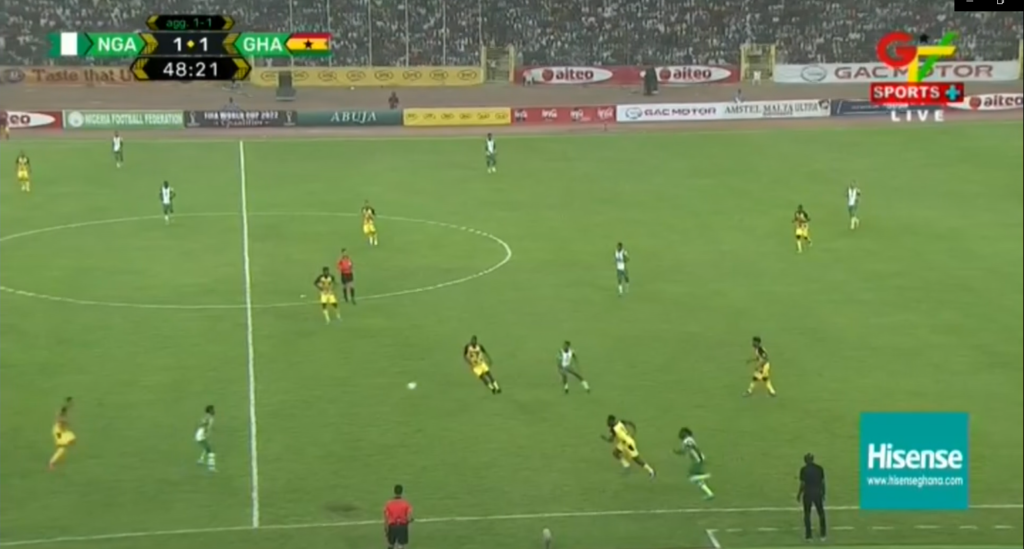
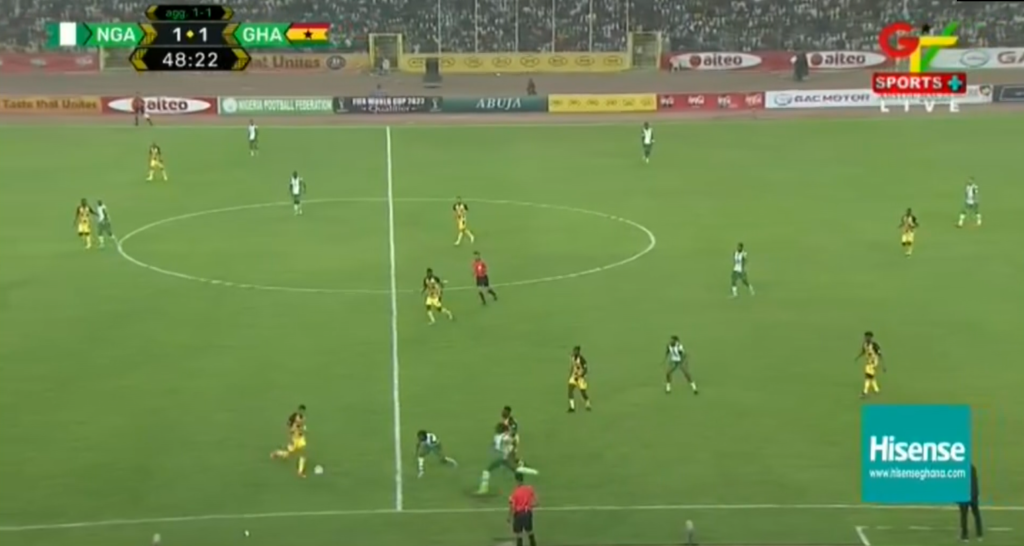
Besides profiting in these wide areas, the shape enabled the Black Stars keep the ball more as they also had more bodies in midfield. Kudus could drop slightly deep anytime Ghana won back possession and that translated to the Black Stars attempting and completing more passes (136 and 95) in the second half, than the first (93 and 56).
They also managed three shots from inside Nigeria's 18-yard box, after failing to get any in the first half. In total, the Black Stars attempted four more shots than they did in the first-half (1).
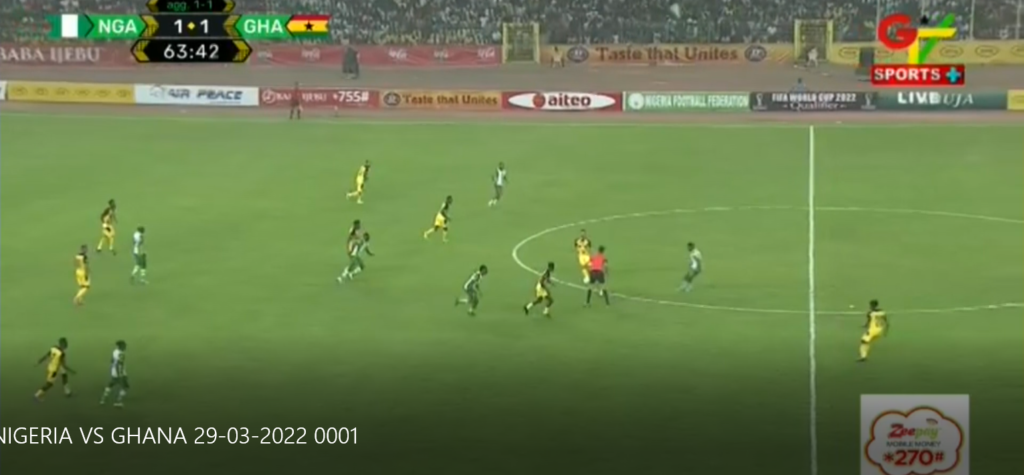
In all of this, the Black Stars also managed to establish numerical superiority in all areas of the field, except in attack, and that was not a problem as Nigeria kept on throwing more bodies forward.
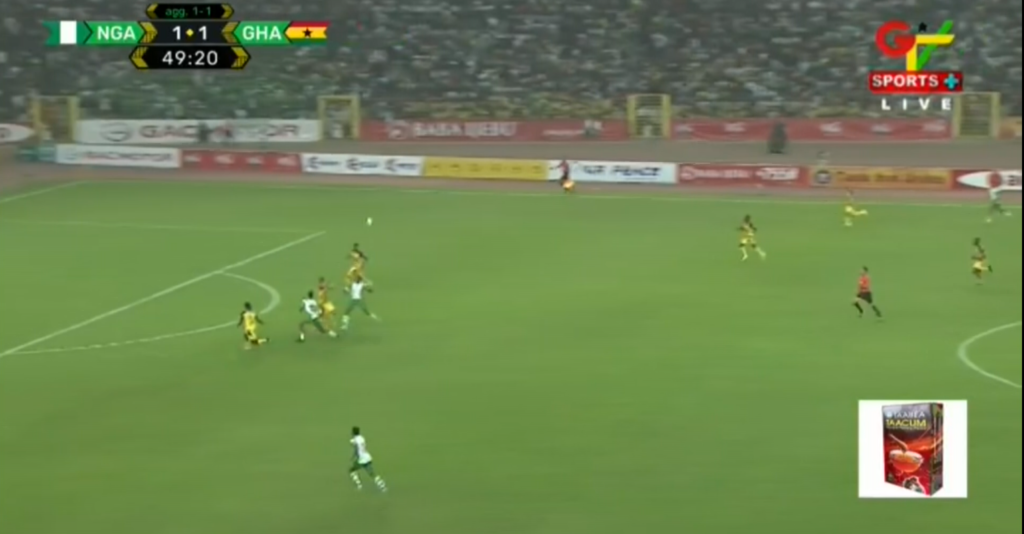
Conclusion
In just two games, the Black Stars utilized three different systems; 4-2-3-1, 3-1-4-2 and a 3-5-1-1/5-3-2 to beat Nigeria, one of the most talked about teams after AFCON 2021.
The technical appreciation of Addo and of course his assistants, proved to be the difference versus Nigeria. There was no single time in both legs where the technical team of the Super Eagles made an in-game adjustment to the team's shape or approach.
Games as close as the Jollof derby are often decided by either the individual brilliance of players or the ability of brains in the dugout and in both ties, Addo always had the upper hand over Eguavoen.
Latest Stories
-
EC sets May 7 to 27 for voters’ register update
2 mins -
Lekzy Decomic, Clemento Suarez, OB Amponsah, others honoured at Ghana Comedy Awards
16 mins -
Harvey Weinstein’s 2020 rape conviction overturned
29 mins -
Late government payments crippling SSNIT – ILO
34 mins -
Experts to shape more equitable digital future at DRIF 24
38 mins -
Bright Simons: Ghana’s billion-dollar ‘Timber Merchant’ deal to protect taxes
56 mins -
Ashanti Regional Minister defends arrest of ECG boss, rejects calls for apology
60 mins -
Cash Waterfall Mechanism report shows significant non-compliance with formula for revenue allocation – Report
1 hour -
Prison officer injured in clash with soldiers in Bawku
1 hour -
SSNIT reserves projected to hit zero in 12 years – ILO
1 hour -
Prestigious Nigerian school closed over bullying reports
1 hour -
Funny Face failed to perform at my show after taking money – Parrot Mouth
2 hours -
CAFCC: Sports Minister to offer Dreams FC a ‘surprise’ package before Zamalek clash
2 hours -
CAF awards 3-0 win to RS Berkane, after Algerian customs confiscated their kits
2 hours -
AgriTech challenge pro holds first pitch
2 hours

